A portable drill press is a versatile tool that brings precision and convenience to drilling tasks. Whether you’re a professional or a DIY enthusiast, understanding this tool can elevate your work. In this article, we’ll delve into what a portable drill press is, how it operates, how to use it effectively, its cost, and the top models on the market.
Table of Contents:
– What is a portable drill press?
– How does a portable drill press work?
– How to use a portable drill press
– How much does a portable drill press cost?
– Good portable drill presses
What is a portable drill press?
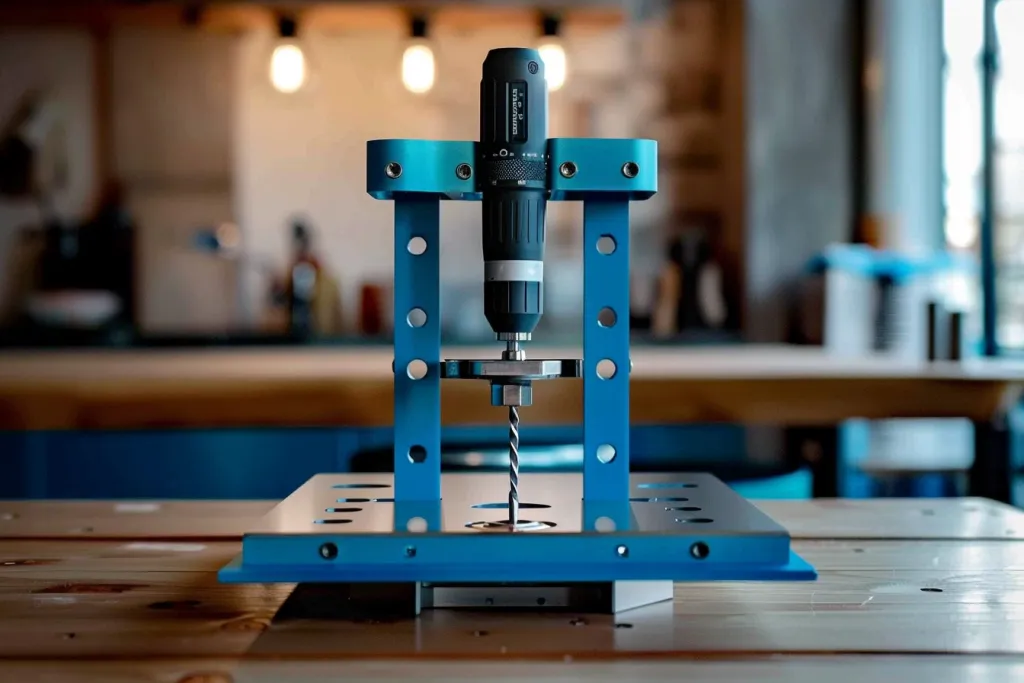
A portable drill press is a compact, transportable version of the traditional stationary drill press. It offers the precision and power of a full-sized drill press but with the added benefit of mobility. These tools are essential for tasks that require accurate drilling, such as woodworking, metalworking, and various DIY projects.
The main components of a portable drill press include a base, column, table, and drill head. The base provides stability, while the column supports the drill head and table. The drill head contains the motor and spindle, which drive the drill bit. The table can be adjusted to accommodate different workpiece sizes and angles, providing flexibility for various drilling tasks.
Portable drill presses come in various sizes and configurations, catering to different needs. Some models are designed for heavy-duty industrial use, while others are suitable for light to medium-duty tasks. Despite their size, these tools maintain the accuracy and efficiency of their stationary counterparts, making them invaluable for both professional and hobbyist applications.
How does a portable drill press work?
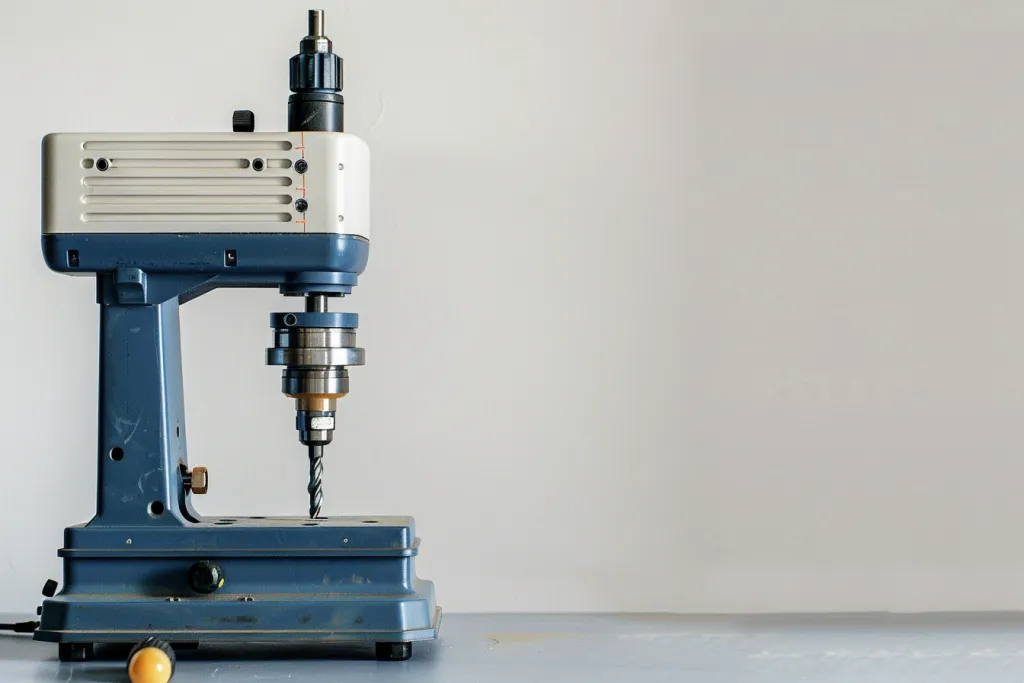
A portable drill press operates through a combination of mechanical and electrical components that work together to deliver precise drilling. At the heart of the drill press is the motor, which powers the spindle. The spindle holds the drill bit and rotates it at high speeds, allowing it to penetrate various materials.
The drill press’s base ensures stability during operation, preventing movement that could affect the accuracy of the hole being drilled. The column provides vertical support and allows the drill head to move up and down. This vertical movement is controlled by a feed lever, which the operator uses to lower the drill bit into the workpiece.
The table of the drill press is another crucial component. It can be adjusted vertically along the column and tilted to various angles, allowing for precise positioning of the workpiece. Some portable drill presses also feature depth stops, which enable the operator to set a specific drilling depth, ensuring consistency across multiple holes.
The combination of these components allows the portable drill press to deliver accurate and consistent drilling results. The motor’s power and speed settings, the stability provided by the base, the vertical control of the column, and the adjustability of the table all contribute to the tool’s effectiveness and versatility.
How to use a portable drill press
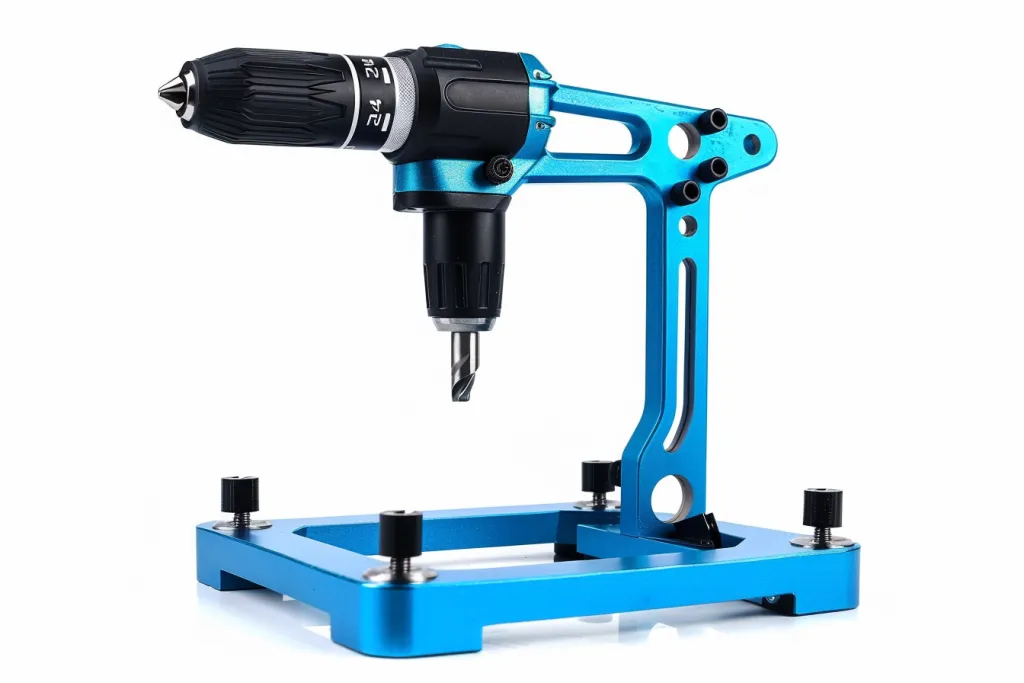
Using a portable drill press requires understanding its components and following safety procedures to ensure effective and safe operation. Begin by selecting the appropriate drill bit for the material and task. Secure the bit in the chuck, ensuring it is tightly fastened.
Position the workpiece on the drill press table. Use clamps or a vise to hold it in place, preventing any movement during drilling. Adjust the table height and angle as needed to align the drill bit with the desired drilling location. If your drill press has a depth stop, set it to the required depth to achieve consistent results.
Before starting the drill press, ensure all safety guards are in place and you’re wearing appropriate personal protective equipment, such as safety glasses and hearing protection. Turn on the drill press and set the desired speed. Use the feed lever to slowly lower the drill bit into the workpiece, applying steady pressure. Avoid forcing the drill bit, as this can cause damage or result in an inaccurate hole.
After completing the drilling, turn off the drill press and wait for the bit to stop rotating before removing the workpiece. Clean the drill press and work area to maintain a safe and organized workspace. Regular maintenance, such as lubricating moving parts and checking for wear, will prolong the life of your portable drill press and ensure optimal performance.
How much does a portable drill press cost?
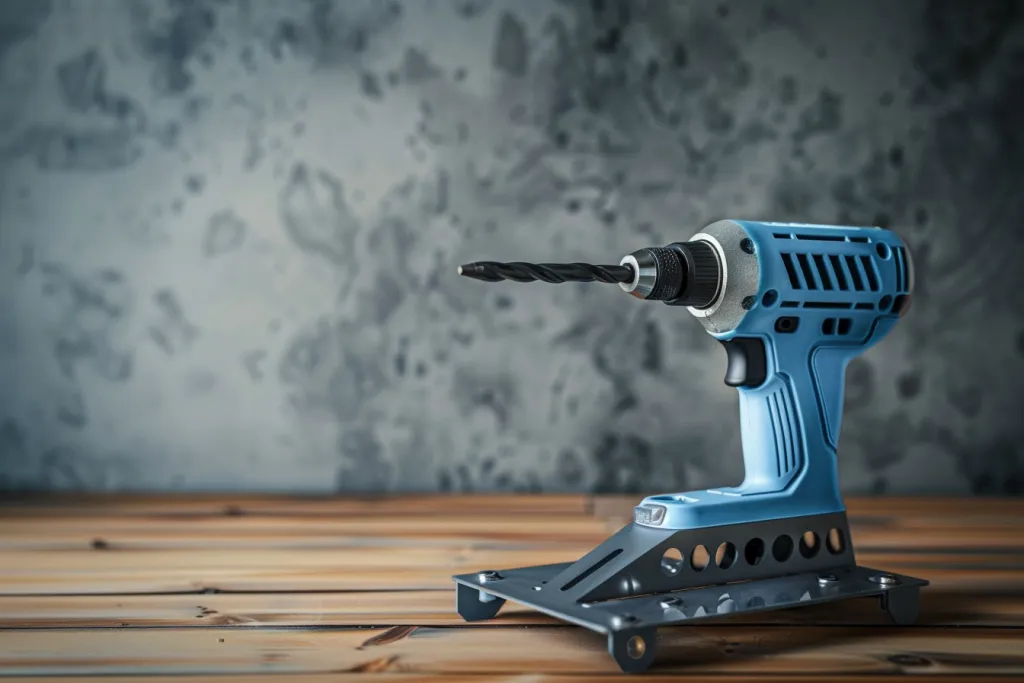
The cost of a portable drill press can vary widely based on factors such as brand, power, features, and overall build quality. Entry-level models designed for light-duty tasks can be found for as little as $100 to $200. These units are suitable for hobbyists and small-scale projects, offering basic functionality at an affordable price.
Mid-range portable drill presses, which offer more power and features, typically range from $200 to $500. These models are ideal for serious DIY enthusiasts and professionals who require greater precision and versatility. They often include features such as variable speed control, depth stops, and higher-quality components.
High-end portable drill presses designed for industrial use can cost anywhere from $500 to over $1,000. These models offer the highest level of power, durability, and precision. They are built to withstand heavy use and are equipped with advanced features such as digital displays, laser guides, and robust construction materials.
When considering the cost of a portable drill press, it’s important to factor in the long-term benefits and potential return on investment. Higher-end models, while more expensive upfront, can offer greater durability and efficiency, reducing the need for frequent replacements or repairs.
Top portable drill presses
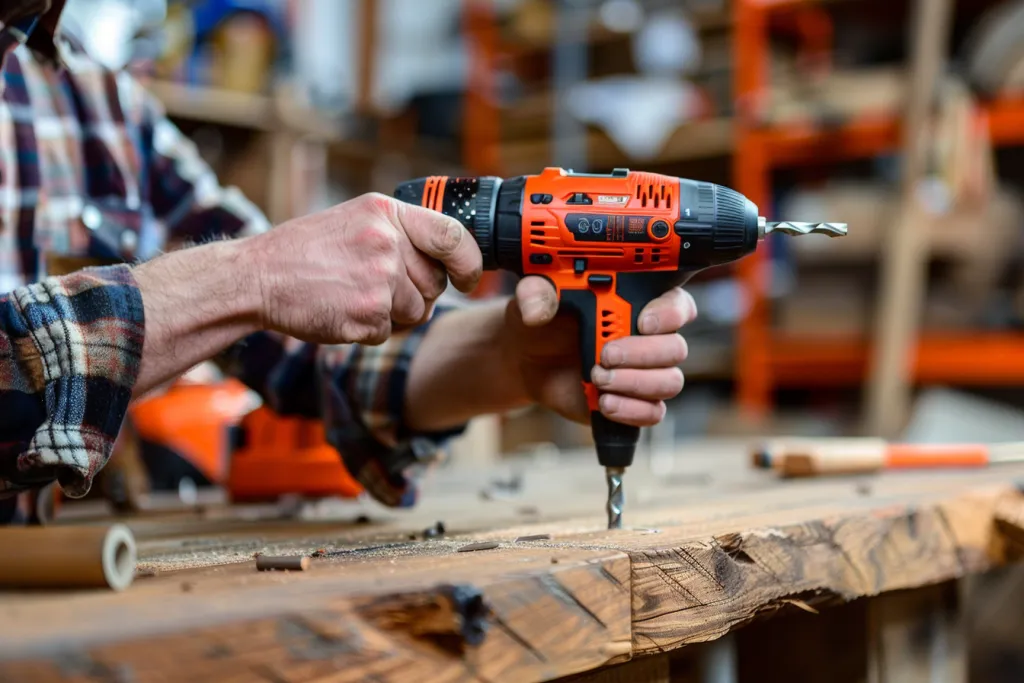
Several portable drill presses stand out in the market for their performance, durability, and features. One such model is the WEN 4214 12-Inch Variable Speed Drill Press. It offers a wide speed range, from 580 to 3,200 RPM, and includes a digital speed display for precise control. Its adjustable table and depth stop make it versatile and user-friendly.
Another good choice is the DEWALT DWE1622K 2-Speed Magnetic Drill Press. Known for its power and stability, this model features a magnetic base that secures the drill press to the work surface, providing exceptional accuracy. It also offers two-speed settings and overload protection, ensuring reliable performance in demanding applications.
The Jet JDP-15B 15-Inch Benchtop Drill Press is a favorite among professionals. It boasts a powerful motor, a large work table, and a wide range of speed settings. Its robust construction and advanced features, such as an X-shaped XACTA laser for precise drilling, make it a top contender in the portable drill press market.
Conclusion:
A portable drill press is an invaluable tool for achieving precise and efficient drilling in various materials. Understanding its components, operation, and proper usage can significantly enhance your projects. Whether you’re a hobbyist or a professional, investing in a quality portable drill press can provide long-term benefits and elevate the quality of your work. By exploring the top models available, you can find a drill press that meets your specific needs and budget.



